
The Dimensions of a Face
I have always been fascinated by the hidden depths of a face. On top of the usual cliches about the eyes being the window to the soul, I believe the contours of each face can be used as a map to another dimension of human connection. This concept has shown up in countless projects I've done over the years, through multiple mediums of expression. In a previous post I discussed my project titled Landscape / Mona Lisa in which I transformed the gradients of the famous painting into a topography.
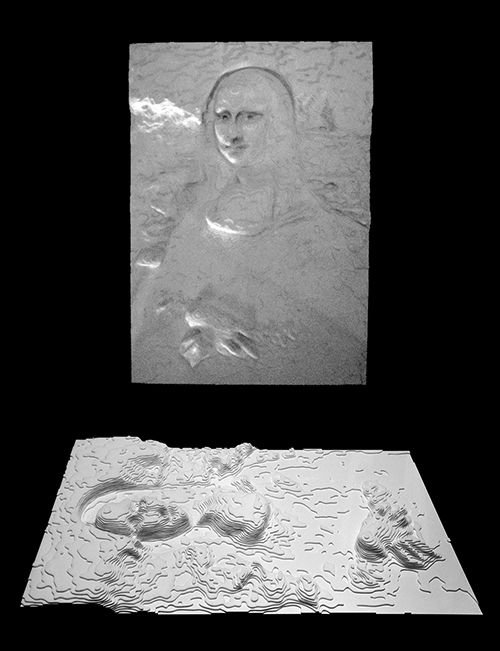
plexiglass acrylic topography derived from the Mona Lisa
More recently, I've been working on a short story about a fictional place where vision is rotated 90 degrees. In other words, what we usually see as vertical, suddenly our eyes see it as horizontal. And as a result of that we start to see the hills and valleys of the human face as a landscape. The nose as a towering peak at the center, the eyebrows as strange patches of grass on a barren plateau. Below I've included an excerpt from my unpublished short-story:
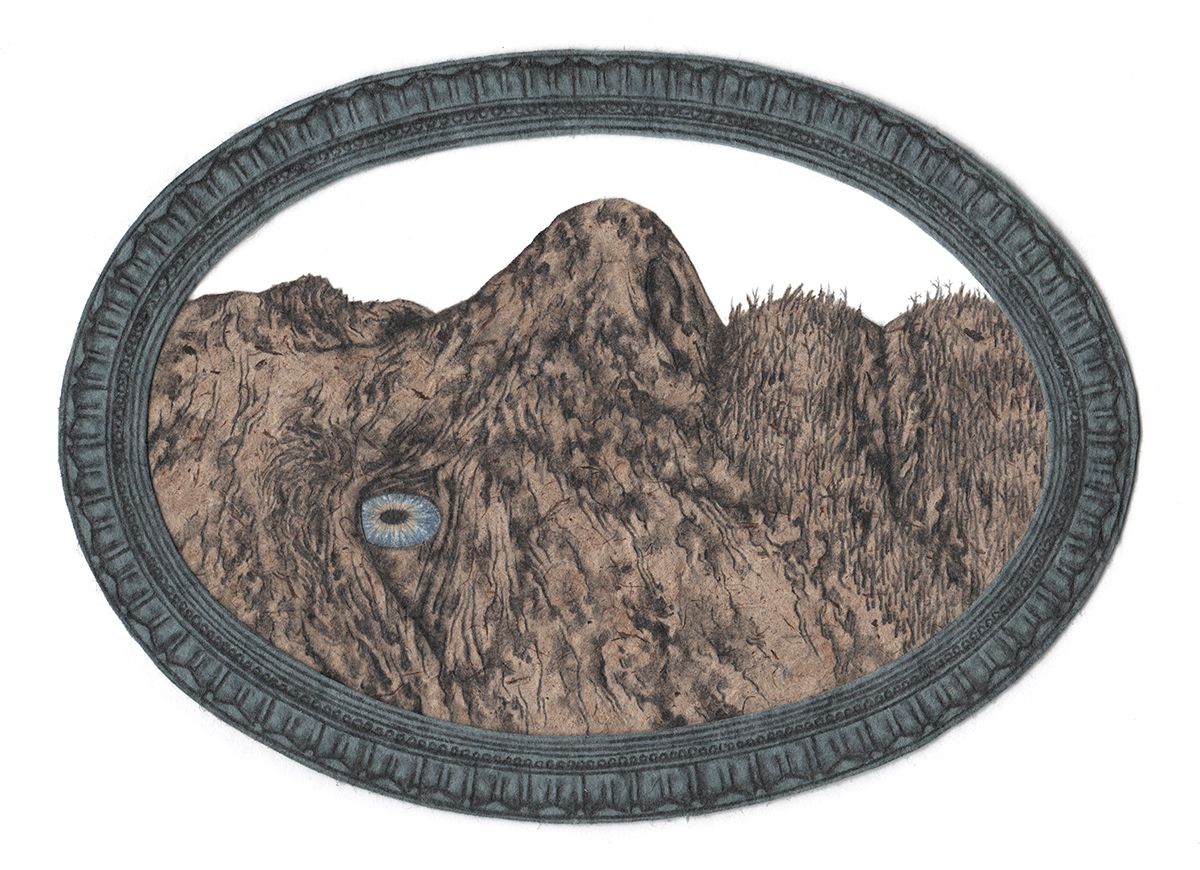
He said he never realized the nose was such a towering presence. Not quite so sheer as a butte but certainly more majestic than a mere hill. Views from all sides, a solitary peak punctured by two symmetrical caves. And the eyebrows - two isolated patches of tall windswept grass among an otherwise barren landscape. Or the scene of this story's turning point, the eyes - the grand prismatic springs, two matching multicolor reservoirs atop glossy white domes of wet clay.
Obama / Landscape:
One of my first explorations of transforming a portrait into a landscape was in 2009, with President Obama as my subject. Unlike the above drawing, this series of two intaglio prints involved splitting Obama's face into nine square pieces. In one arrangement the nine pieces are recognizable as his face, whereas in another arrangement the same nine pieces create a landscape scene. His upside-down chin makes a hill in the foreground and his shoulders come together to form a mountain in the background. The landscape is divided by multiple meandering rivers and sits below a dense cover of spiraling clouds (his cheeks and ears).
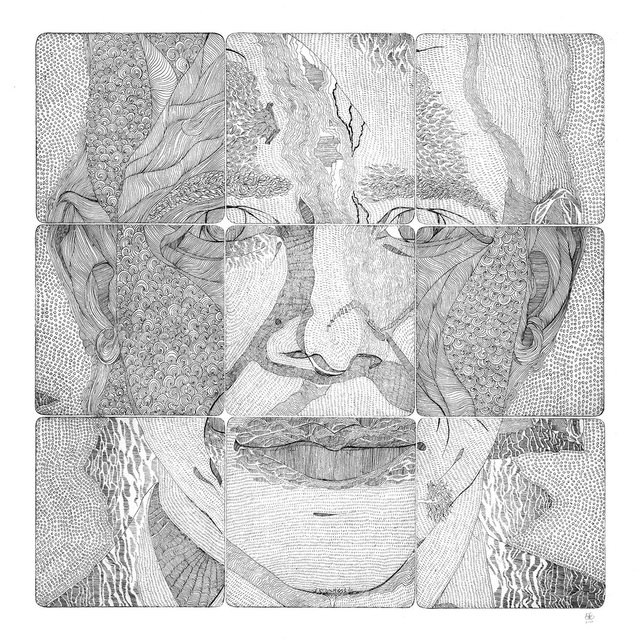
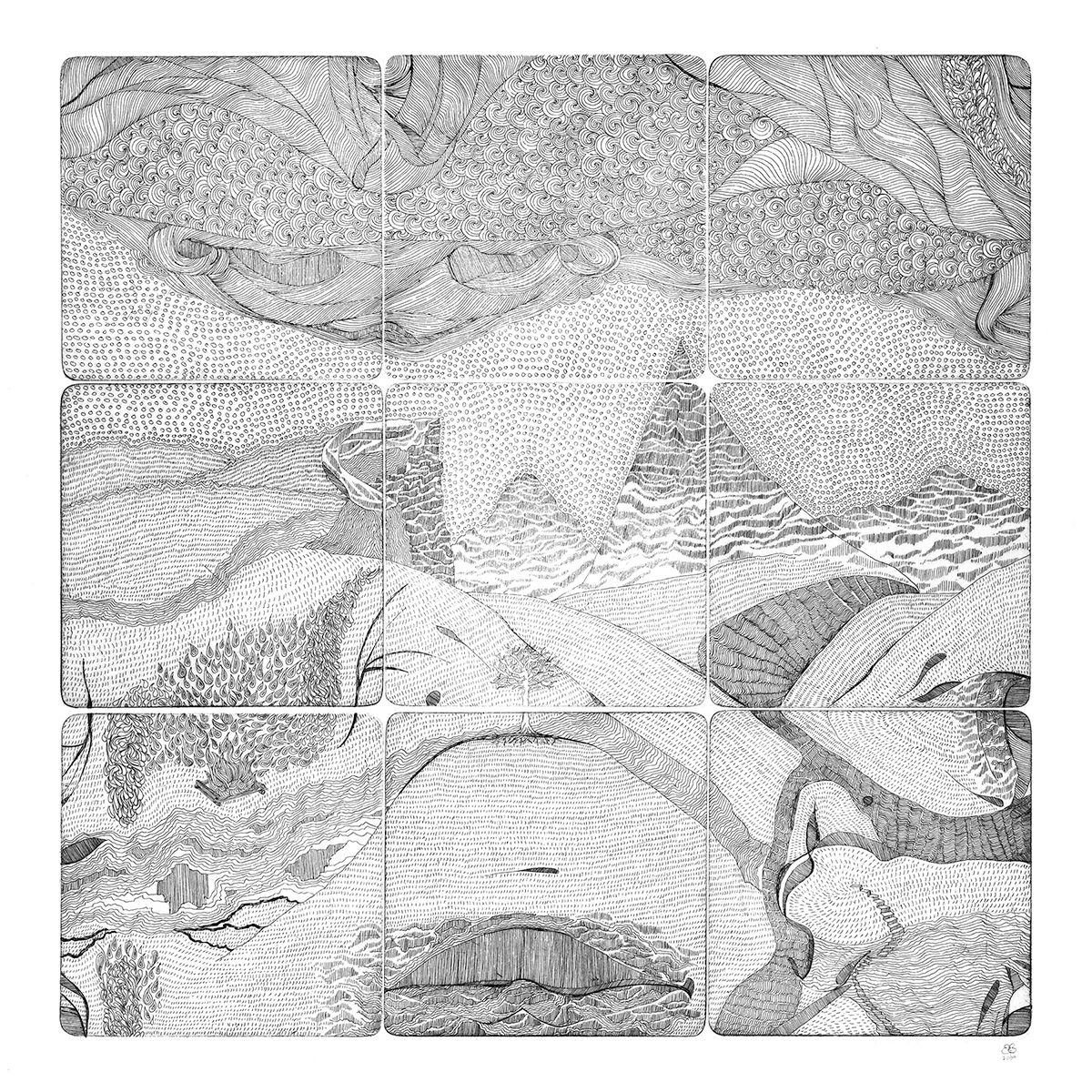
How Did I Make This?
To understand how this series of prints was made, it's important to first understand how intaglio printmaking works. After etching my drawing into the nine copper plates, I applied the ink to each plate, set the paper on top of the plates, and sent the whole thing through the printing press. The force of the printing press pushes the ink from the etched plates onto the paper, and therefore leaves my original drawing permanently printed onto the paper. The benefit of this process is that the same plates can be used over and over again, which means the same drawing can be printed hundreds of times without losing the quality of the image.
The most common way to do this kind of printmaking is to put the entire drawing onto one copper plate, but I decided to split the drawing into multiple pieces in order to take advantage of this ability to reuse the plates. I realized I could create multiple different images by simply rearranging the same nine plates. After that realization, I settled on using Obama's face as my subject and started playing around with some ideas in photoshop. As you can see below, I divided his presidential portrait into nine even squares. I very carefully scrambled the nine pieces until I found an arrangement that I felt could be drawn as a landscape with the right line-work and textures. With this diagram as my reference point, I drew the outlines of his face on my nine plates, then rearranged them and began filling in the outlines as a landscape scene. The end result is a two-part series of prints: one of Obama's face and one of a landscape.
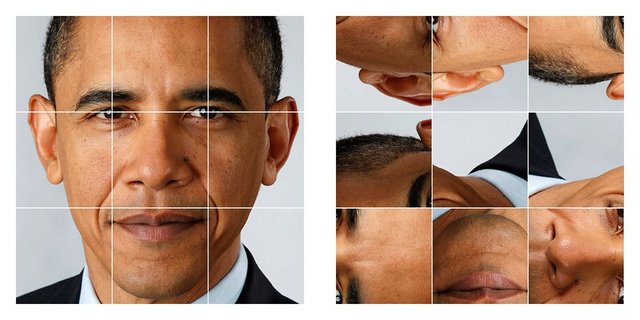
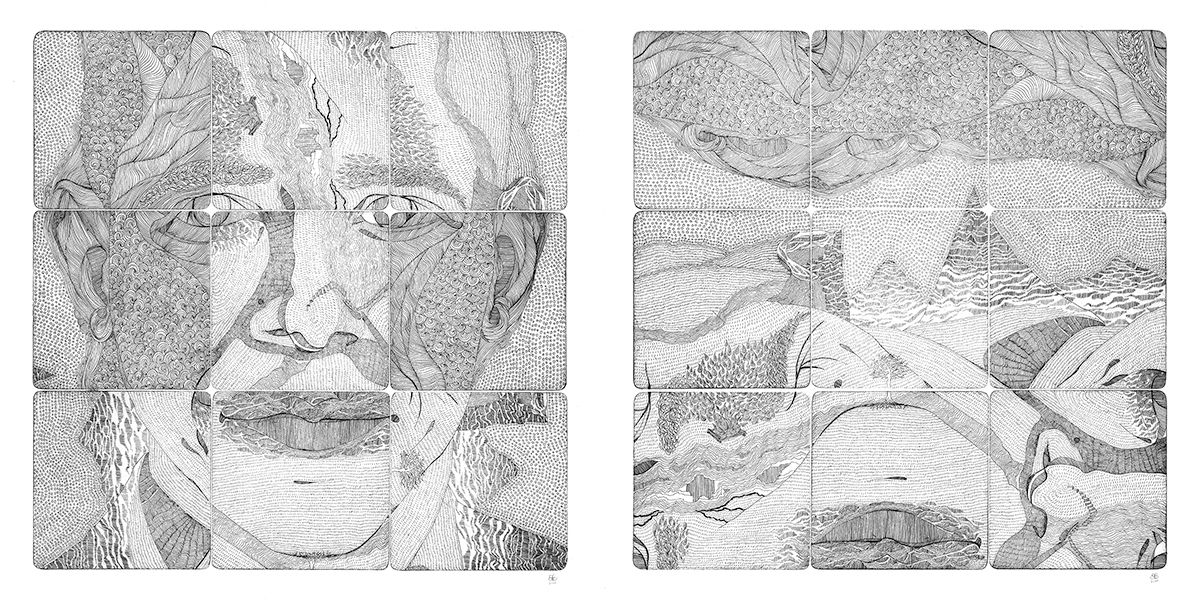
Closer Looks
If you look closely at the zoomed-in images below, you can start to see the level of detail I put into the landscape to effectively create the scene.
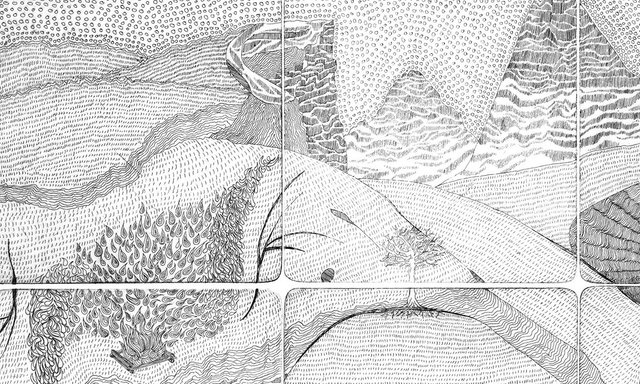
In the above zoom you can see that Obama's eyebrows are used to create the graphic of a bonfire gone awry, with the surrounding field set ablaze. A lone tree sits atop the hill created by his inverted chin.
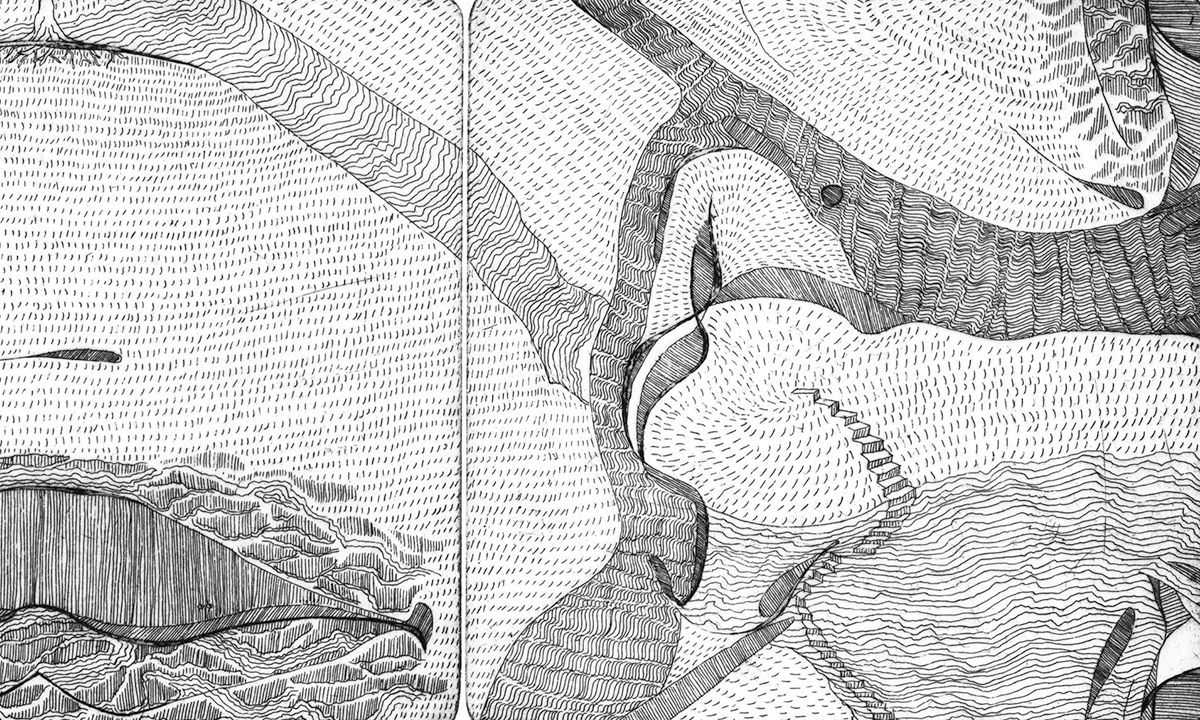
Here you can see how Obama's nose becomes a hill overlooking a series of riverways. A set of steps are set against the hillside to provide access for the wandering visitor to the Obama Landscape.
Let me know what you think of this series in the comments below.
Landscape / Mona Lisa | Landscape / Girl with a Pearl Earring

This is very beautiful etching. I have never done any printmaking before (except for risograph). This makes me want to learn more about the technique. The difference between zoomed-in and zoomed-out image is striking!
Downvoting a post can decrease pending rewards and make it less visible. Common reasons:
Submit
Thanks @carrotcake! I would definitely recommend trying out some printmaking. The issue with hard-ground etchings is that they require access to all the necessary materials/machinery, such as an acid bath and a printing press. It's unfortunate that it's such a complicated process, because it makes such nice results!
Downvoting a post can decrease pending rewards and make it less visible. Common reasons:
Submit
thats some awesome stuff man. Love it! Especially the mona lisa topography.
Downvoting a post can decrease pending rewards and make it less visible. Common reasons:
Submit
Thanks @danieltee! Much appreciated
Downvoting a post can decrease pending rewards and make it less visible. Common reasons:
Submit